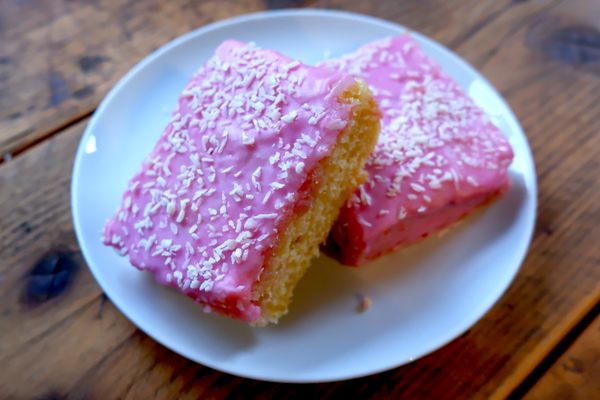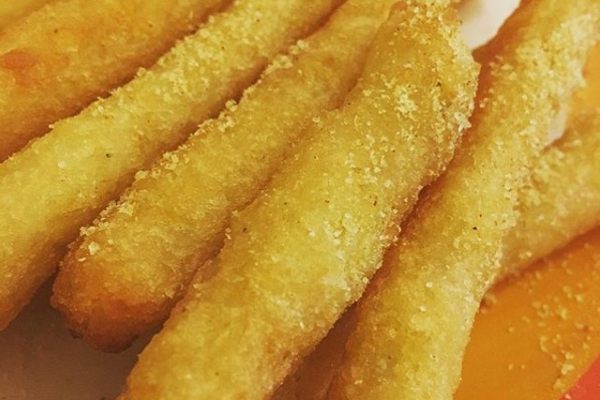Sweets
Vínarterta
Elusive in its country of origin, this multilayer cake has found a home in Manitoba's “New Iceland” region.
Vínarterta is a traditional, multilayer Icelandic cake made by alternating thin layers of buttery shortbread with a cardamom and dried prune filling. It was popular in the late 19th and early 20th century in Iceland, but is hard to find there today. However, for the descendants of Icelanders who immigrated to North America, the white and dark purple cake is more than a coveted treat. It’s a potent symbol.
Vínarterta has its origins in Vienna (the name is Icelandic for “Viennese torte”). In the late 1700s, layered cakes made with almond flour and dried fruit were highly popular in Austria. In the 1790s, an Austrian recipe for the cake was translated into Danish. The recipe became the height of culinary chic in Copenhagen, and in the elite circles in Iceland (which, at the time, also meant Danes, as Iceland was then ruled by Denmark). The scarcity and cost of ingredients would have put it out of reach for Icelandic farmers and fishermen. Even for the upper classes, most of the ingredients were luxuries: Goods shipped to the small island were limited. The original recipe was tweaked as a result: Dried prunes, for example, were shipped to Iceland, so they became incorporated into the Icelandic recipe.
In 1875, a devastating volcanic eruption caused such a strong economic downtown that it sparked an exodus to Canada. By the late 1890s, some improvement in imports were a small victory at a time when Iceland as a country was still struggling economically in many other ways. As ingredients such as flour and sugar grew more accessible, vínarterta became widely popular. Still, waves of emigration continued until the turn of the century. When Icelanders arrived in Canada, they brought the fancy dessert, or, at least, the aspiration to make it. In their new home, it was a symbol of wealth and success.
While it has fallen off the radar in Iceland, to this day vínarterta is a popular treat in Icelandic Canada. (Though people like to talk about how labor intensive it is, and tend to make it for special occasions.) In New Iceland, as the region in the Canadian province of Manitoba where Icelanders settled is known, residents are committed to preserving vínarterta. Twists on the recipe are usually met with contempt. According to Canadian historian Laurie Bertram, an expert on immigration and vínarterta, for even fifth- and sixth-generation Icelandic Canadians, the cake is “both a powerful and culturally significant way of connecting to the Icelandic past and asserting that identity in the present.”
Where to Try It
-
The gift shop sells vínarterta from the excellent Sugar Me Cookie bakery in Gimli.
-
Hnausa General Store Website
Civic 20008, Hnausa, Manitoba, R0C 2R0, CanadaThe proprietors offer homemade vínarterta alongside other Icelandic products from packaged licorice candy to fresh pönnukökur.














